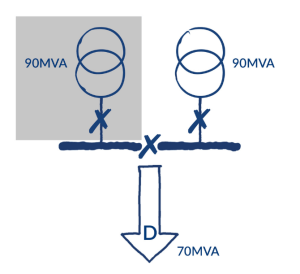What is demand headroom?
Demand headroom is the gap between the rating of the electricity network to supply electrical demand, and the actual demand in that part of the network.
Article by Pete Aston – acknowledged expert in networks
Pete joined Roadnight Taylor from Western Power Distribution, the UK’s largest DNO, where he was Primary System Design Manager. He led a team of sixty responsible for all connections and reinforcement of the extra high voltage network and oversight of the roll out of active network management across all four of WPD’s licence areas.
19th May, 2022

The terms demand and generation are used in the electricity industry to describe consumers and producers of electricity.
Electrical demand, or consumption, includes lighting, heating, running fridges and freezers, power tools, import for battery schemes – the list is almost endless.
Electrical generation, or production, includes older fossil fuel generators like coal and gas, newer renewable types of generation, like solar and wind, as well as nuclear.
Every part of the network has a certain capacity, or rating often different for demand and generation. You can read our article ‘What is reverse power flow?’ for an explanation of headroom for generation. This article explores the rating of the network for demand, or more importantly (for developers) the headroom for new demand connections.
Electrical demand changes incrementally over time. For most of the time since the electricity network has been established, electrical demand has increased year on year. Interestingly, from 2005 to 2020 electrical demand in Great Britain dropped, due to the introduction of more efficient products (like compact fluorescents and LEDs for lighting). Demand is expected to increase significantly over the next ten years and beyond with the introduction of electric vehicles and electric heating.
Every piece of equipment on the electrical network has a rating, a maximum level of power to prevent them from getting too hot. If the electrical demand in a particular part of the network increases too much, then reinforcement is required to increase the capacity.
Demand headroom is the gap between the rating of the network to supply demand, and the actual demand in that part of the network. A typical example is below.
A bulk supply point (BSP) substation might have 2x 90MVA 132/33kV transformers. The substation needs to be able to supply all the demand fed from it if one of the two transformers is switched out (this is sometimes referred to as N-1, i.e. the number of transformers at the substation minus one of them).
In this case, only having one transformer gives the substation a capacity of 90MVA to supply the demand. The demand is 70MVA, which means that the headroom is 90-70 = 20MVA.
Contact us
Roadnight Taylor can help to identify demand headroom on the network for new connections, including import for batteries, data centres and large housing developments. To find out more call us on 01993 830571 or send us a message via our contact form.









